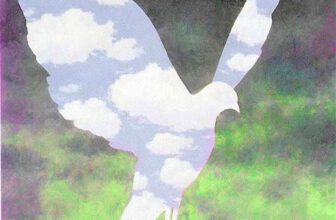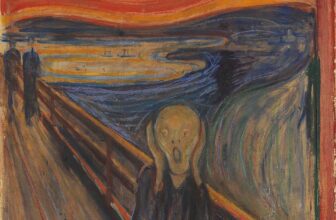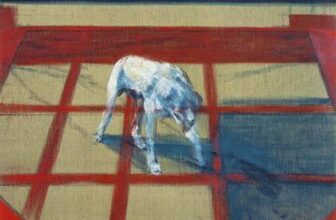
Why Vincent Van Gogh Commit Suicide
The Agony and Brilliance of Vincent van Gogh: A Story of Art and Suffering
Vincent van Gogh is today remembered as one of the greatest painters in Western art history. His emotionally charged brushwork and bold colors redefined expression in painting, laying the foundation for modern art. But behind the vibrant swirls of “Starry Night” and the radiant still lifes of sunflowers lies a tragic story, one of relentless inner torment, social isolation, and profound psychological suffering.
Van Gogh’s life was a storm of creativity and despair, culminating in his suicide at the age of 37. This is the story of a tortured soul whose genius was intertwined with mental illness, rejection, and a relentless yearning for human connection.
A Troubled Beginning: Family and Early Struggles
Vincent Willem van Gogh was born on March 30, 1853, in Groot-Zundert, a small village in the Netherlands. His father, Theodorus van Gogh, was a Protestant minister, and his mother, Anna Cornelia Carbentus, came from a well-to-do family. Vincent was the eldest surviving child, but he was not the first Vincent. A year before he was born, his mother gave birth to a stillborn son, also named Vincent. Every Sunday, young Vincent walked past the grave of his namesake brother, a daily reminder of death and identity confusion that haunted him.
From a young age, Vincent was sensitive, introspective, and intense. He struggled to find his place in life. His early education was uneven, and though he briefly attended boarding schools, he was withdrawn and often isolated. His emotional volatility and difficulty forming relationships began to show in childhood and worsened over time.
Despite being part of a large family, he had three sisters and two brothers, Vincent often felt like an outsider. His younger brother Theo would become his closest confidant and emotional anchor. Their correspondence, totaling more than 700 letters, remains one of the most insightful windows into Vincent’s psyche.
The Search for Meaning: Failed Careers and Early Art
Before committing to art, Van Gogh explored various professions. He worked for his uncle’s art dealership, Goupil & Cie, in The Hague and later in London and Paris. Though initially promising, he became disillusioned with the commercial side of art and was eventually fired. He then tried his hand at teaching and later studied theology in a bid to become a pastor, following in his father’s footsteps. That, too, failed.
His time in the Borinage, a poor coal-mining region in Belgium, was a turning point. Living among the impoverished miners, Vincent experienced spiritual awakening and began sketching their lives. His empathy with the downtrodden and suffering would become a core theme of his later work.
By his late twenties, Van Gogh decided to become an artist, despite having no formal training. His early works, like The Potato Eaters, reflect his fascination with rural laborers and his desire to express the harsh realities of life.
Mental Illness and the Descent into Darkness
Van Gogh’s mental health deteriorated as he delved deeper into art. He was plagued by anxiety, depression, hallucinations, and frequent psychotic episodes. Historians and psychologists have since speculated about his condition: bipolar disorder, schizophrenia, temporal lobe epilepsy, borderline personality disorder, and syphilis have all been suggested. There is no consensus, but the evidence of his mental suffering is overwhelming.
His erratic behavior alarmed those around him. He alienated friends and was often socially inappropriate, overly intense, and moody. Yet, he was also incredibly prolific. Between 1880 and 1890, he created over 2,100 artworks, including around 860 oil paintings.
Vincent’s intense psychological state seemed to drive his creativity. His paintings pulsed with emotion, color, and movement. He once wrote, “I put my heart and soul into my work, and I have lost my mind in the process.”
The Tragedy of Arles and the Famous Ear Incident
In 1888, Van Gogh moved to Arles in the south of France, seeking sunlight and peace. He dreamed of founding an artist commune and invited Paul Gauguin, a fellow Post-Impressionist, to join him. Their time together, however, was tumultuous.
Vincent’s erratic behavior intensified. The two artists clashed over artistic philosophy and personality. One fateful December night, after a heated argument, Van Gogh suffered a severe mental breakdown. In a fit of mania, he mutilated his left ear with a razor and delivered it to a local brothel.
The infamous “ear incident” became a symbol of Van Gogh’s madness. He was subsequently hospitalized in Arles and later voluntarily entered an asylum in Saint-Rémy-de-Provence. During his confinement, he produced some of his most iconic works, including Starry Night, Irises, and Wheatfield with Cypresses. These paintings reveal a mind in turmoil, beauty filtered through the lens of suffering.
Isolation, Rejection, and the Absence of Recognition
Van Gogh sold only one painting during his lifetime: The Red Vineyard for 400 francs. Despite his staggering output and the financial support from his brother Theo, he lived in poverty. His raw, expressive style was ahead of its time, and the public and critics dismissed his work as crude and incoherent.
Worse, he was tormented by loneliness. Vincent craved human connection and love but struggled in relationships. He had several unrequited loves and failed affairs, often falling obsessively for women who could not or would not return his affection. He proposed marriage multiple times and was repeatedly rejected.
His fragile self-esteem, rejection from society, and unrelenting creative drive became a toxic mix. As his mental illness worsened, he drifted further from reality, alternating between bursts of artistic energy and dark, paralyzing depression.
Auvers-sur-Oise and Suicide
In May 1890, Van Gogh moved to Auvers-sur-Oise, a small village near Paris, to be closer to Theo. He was under the care of Dr. Paul Gachet, a physician with an interest in art and mental health. For a time, Vincent seemed more stable. He painted furiously, creating more than 70 paintings in 70 days.
But the darkness never truly left him. Theo, his greatest supporter, was facing his own difficulties, ill health, professional instability, and the pressures of raising a family. Vincent began to feel like a burden. He feared Theo would no longer be able to support him.
On July 27, 1890, Vincent van Gogh walked into a field with a revolver and shot himself in the chest. Wounded but still conscious, he managed to return to his inn, where he died two days later in his brother’s arms. His last words reportedly were, “La tristesse durera toujours”, “The sadness will last forever.”
Theo, devastated by the loss, died just six months later. The brothers are now buried side by side in Auvers-sur-Oise.
A Flame That Burned Too Bright
Today, Vincent van Gogh is revered as a genius, a visionary whose art revolutionized the way we see the world. His life, once marked by obscurity, poverty, and despair, has become a symbol of the tortured artist, someone whose brilliance came at the cost of his mental well-being.
But Van Gogh was more than a tragic figure. He was a man of immense compassion, depth, and resilience. His letters to Theo are filled with philosophical insight, empathy for the suffering, and a passionate love for nature and art. He once wrote:
“What would life be if we had no courage to attempt anything?”
His story is not just one of madness and suicide, but also of extraordinary perseverance. In the face of crushing adversity, he created beauty that transcended pain. His work now speaks to millions across the globe, proving that even in suffering, there can be profound meaning and connection.
What Was Van Gogh’s Problem? A Complex Mix of Mental Illness and Existential Struggle
Van Gogh’s “problem” cannot be summed up easily. He suffered from a multifaceted set of mental health issues that were poorly understood in his time. Today, he would likely be diagnosed with a combination of bipolar disorder and borderline personality disorder, possibly complicated by epilepsy or other neurological conditions.
But beyond clinical labels, Van Gogh’s torment stemmed from deeper existential struggles, an overwhelming desire to be loved and understood, a longing to find spiritual and artistic purpose, and a hypersensitivity to the cruelty and indifference of the world.
He was never at ease within himself or with others. Art became both his salvation and his torment. It was through painting that he tried to make sense of the chaos within and around him.
The Role of Family: Theo, the Anchor of His Soul
Theo van Gogh was not only Vincent’s brother but his emotional lifeline. Their correspondence reveals a relationship of deep mutual affection and dependence. Theo supported Vincent financially, but more importantly, he believed in his art when no one else did.
Without Theo, it’s likely Vincent would not have survived as long as he did or produced the volume of work he left behind. Their bond was a rare light in Vincent’s otherwise lonely world. Theo’s untimely death soon after Vincent’s speaks to the deep connection between the two, a testament to the unbearable grief and mental strain that accompanied their final days.
The Price of Genius
Vincent van Gogh’s life was a tragic masterpiece, a narrative where brilliance and madness were hopelessly entwined. His suffering was profound, yet he channeled it into art that continues to touch hearts across generations. He died believing he was a failure, yet his legacy tells another story.
He reminds us that behind every brushstroke lies a human soul, wrestling with forces both internal and external. His art was not just about beauty, it was about survival, expression, and the desperate need to be seen.
In the end, Van Gogh’s story is a haunting yet inspiring one. It teaches us about the cost of neglecting mental illness, the power of empathy, and the eternal search for meaning in a world that often refuses to offer it.




